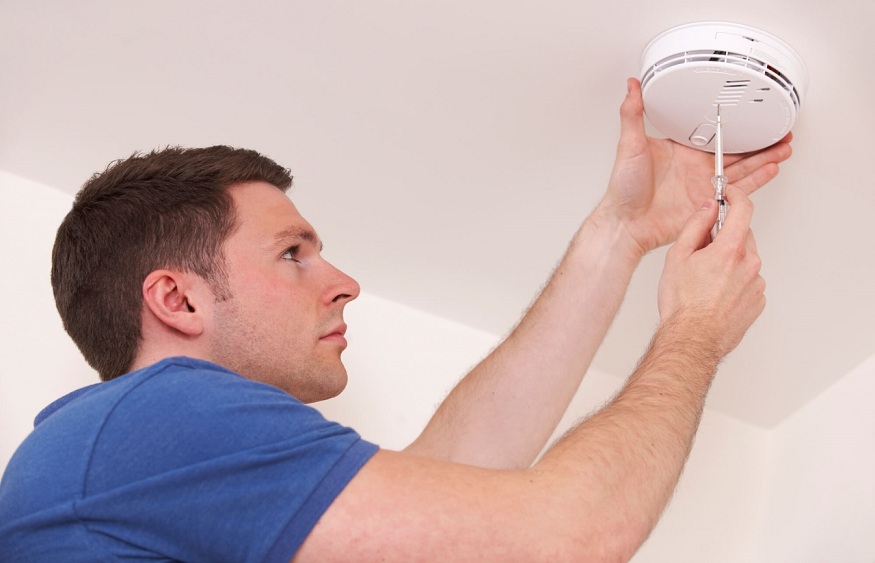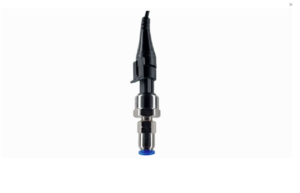where to install smoke detectors

How to Best Place Smoke Detection systems in The House
The National Fire Prevention Association reports that around 2,620 people each year lose their lives in house fires. The message is plain since over 60% of those fatalities occur in houses without working smoke/fire alarms at all. Knowing how smoke alarms work and taking care of them in the right way may save a family from a terrible catastrophe.There are smoke detectors, heat detectors, and detectors that can do both.Let’sunderstand where to install smoke detectors.
Sensors that detect heat
The original home fire alarms featured heat detectors, thus this technology has been around for a while. When the internal temperature hits a certain threshold, a warning sound is produced. When time is not of the essence of the area is tiny, a heat detector will do. True fires are detected a little more slowly by heat detectors, but their false alarm rate is lower. Toxic smoke may cause death even before the flames reach a home.
Smoke Detectors
Most fires can be detected by smoke alarms before they can be detected by heat. There are now three kinds of smoke alarms on the market, and they each use a unique technology to detect a fire:
- Toto detects smoke, ionization smoke alarms use tiny particles of fissile isotopes that produce ions, which in turn generate a very small electrical current between the alarm’s electrodes. The alarm goes off as soon as smoke of any kind reaches the interior chamber and disrupts the flow of electricity. This alarm is effective for quick, intense flames.
- The light and photoelectric sensors in photoelectric smoke alarms are what make them work. The optical chamber is designed to detect smoke by detecting light dispersed by particles of smoke, which sets off an alert. For flames that are burning slowly and steadily, such an alert is ideal.
- Smoke detectors that combine ionization and photoelectric technology are called “combination” devices. For maximum safety, the NFPA advises utilizing smoke alarms that use both technologies. Multiple Energy Supply Options
- Alarms against fire and smoke may be either battery-operated or hooked into the electrical system. If the power goes out, these connected smoke alarms can keep on working thanks to an integrated battery backup mechanism.
- Battery-operated smoke alarms, typically powered by 9-volt batteries, are widely used because of their inexpensive price and simplicity of installation. However, they only provide adequate protection if their batteries are regularly checked and changed.
Most of the time when a smoke detector is there but does not work effectively during a fire, it is because the batteries are dead or the alarm has been unplugged.As a result, several jurisdictions have adopted ordinances mandating the installation of interconnected, hard-wired smoke alarms, which trigger a continuous series of alerts if even a single detector detects smoke.Most of these alarms may be powered by standard household electricity (often 120 volts) and include a built-in battery with a lifespan of at least ten years.
Placing the smoke detectors
- Smoke alarms must be installed by national standards and local building codes. Many criteria in regional building codes are derived from these suggestions. 6
- Each level of your house, including the basement, should have a smoke alarm installed, not only the upper floors.
- On floors without bedrooms, alarms should be placed in the main gathering space (such as a living area, den, or playroom) and again near the upper floor access (through stairs).
- Any smoke detectors in the cellar need to be mounted on the ceilings at the foot of the steps leading to the ground floor.
- If you want to reduce the number of false alerts caused by cooking, place your smoke detectors at a minimum of Ten feet (3 meters) away from your range or oven.
- Install smoke detectors on the upper floors of your home (remember, smoke rises). Mounted alarms on the wall shouldn’t be more than a foot and a half from the wall top.
- The alarm should be mounted no closer than three feet to the base of a sloped ceiling’s peak.
- Smoke detectors should not be placed near drafty areas such as windows, doors, or ducts.
- To avoid any potential danger, smoke detectors should never be painted. The alarms may not operate if they are painted, covered with stickers, or otherwise decorated.
- Connecting smoke detectors is the safest option. All of the smoke detectors will go off if one goes off. You can use wires or wireless technologies to link devices together.
- When installing a network of smoke detectors, be sure they are all made by the same company. The alarms may not go off if they are incompatible.
Install smoke detectors at ceiling or wall level, say experts. Install detectors 12 inches from the ceiling to improve sensitivity. Each floor of a home needs a smoke alarm. New buildings must have hardwired, interconnected smoke alarms. Even in older homes where battery-powered gadgets are allowed, a hardwired solution is preferred.






